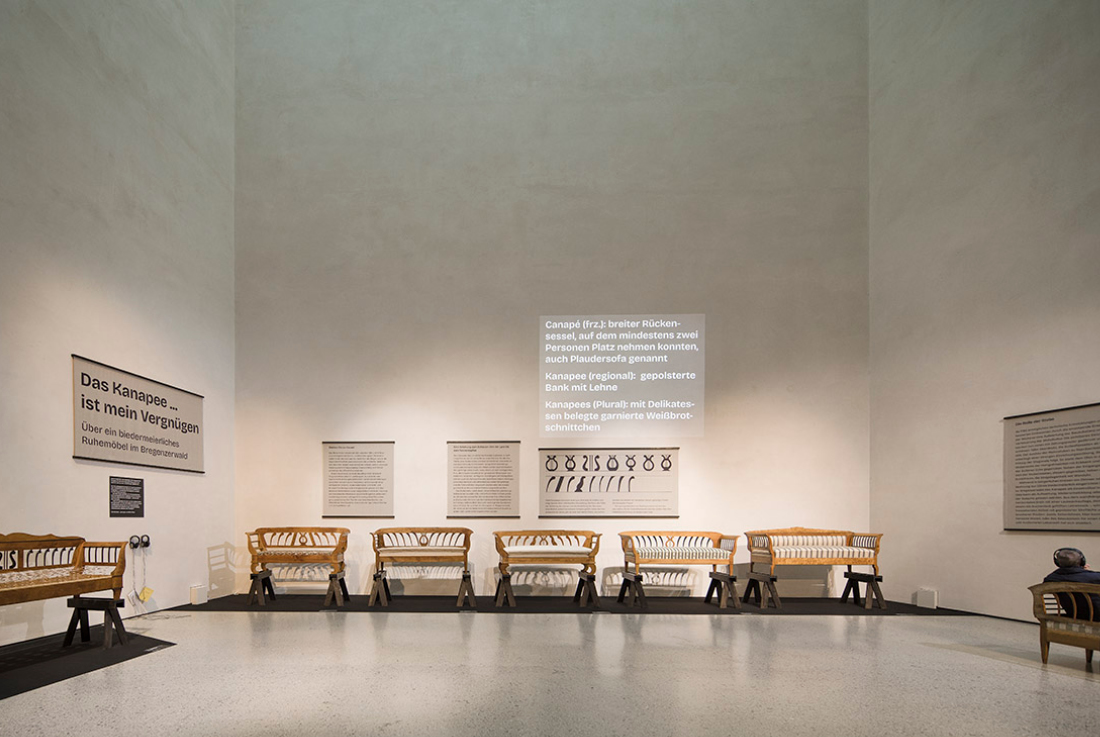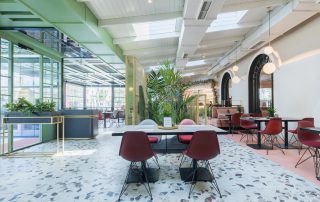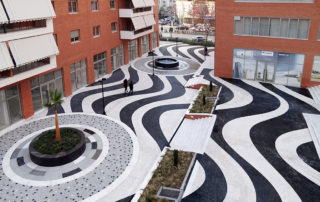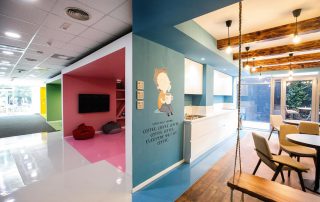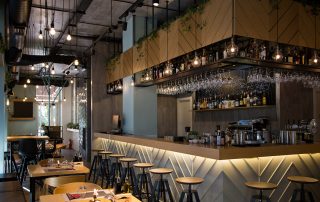How did seating furniture from an urban environment of the Biedermeier period end up in the Bregenzerwald and the rural parlor? In addition to the fascination with the individual design of each canapé, this is one of the questions that gave rise to the exhibition at the museum.
Restoring 200-year-old seating furniture is sustainable. The exhibition design should also be sustainable. The aim was to produce as little waste as possible and to use materials that were already available, so that the exhibition could be realized with the most economical means. Shown in the museum’s publicly accessible atrium, it reached a large audience. Via the foyer (store and café) with a low ceiling, visitors reach the exhibition area with three 23 m high clay walls illuminated by a skylight. The canapés presented on black workshop trestles are alienated. The raised viewing level brings the exhibition content into focus. Nine canapés show individual restoration steps in the carpentry and upholstery trades. Above this level, the well-composed arrangement of text panels printed on untreated linen fabric and screens guide visitors through the exhibition. They provide background information and enter into a dialog with the visitors. Only one canapé, which serves as seating in the exhibition, is placed on the floor. The positioning of a table with materials and tools defines the exhibition area towards the foyer.
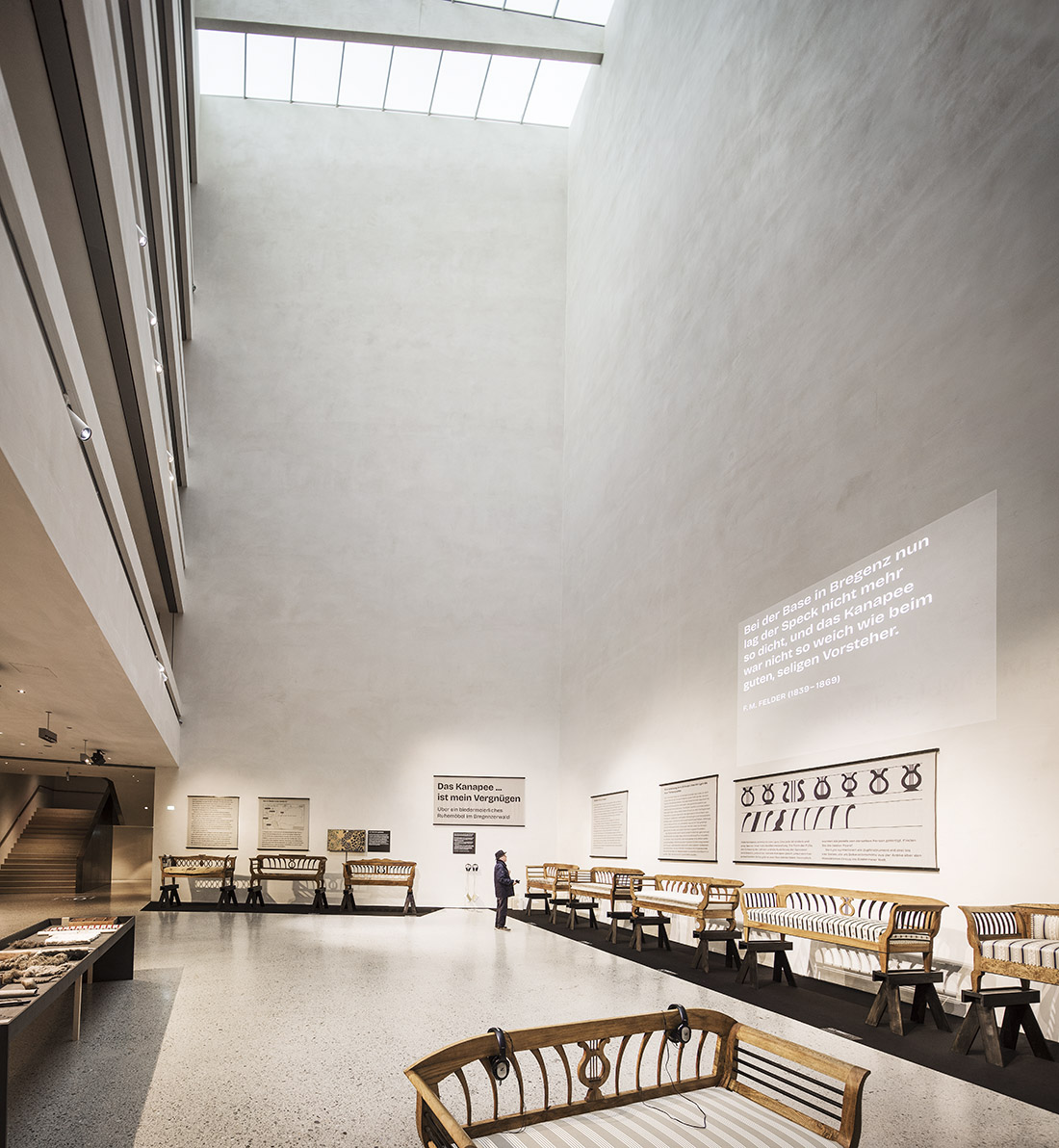
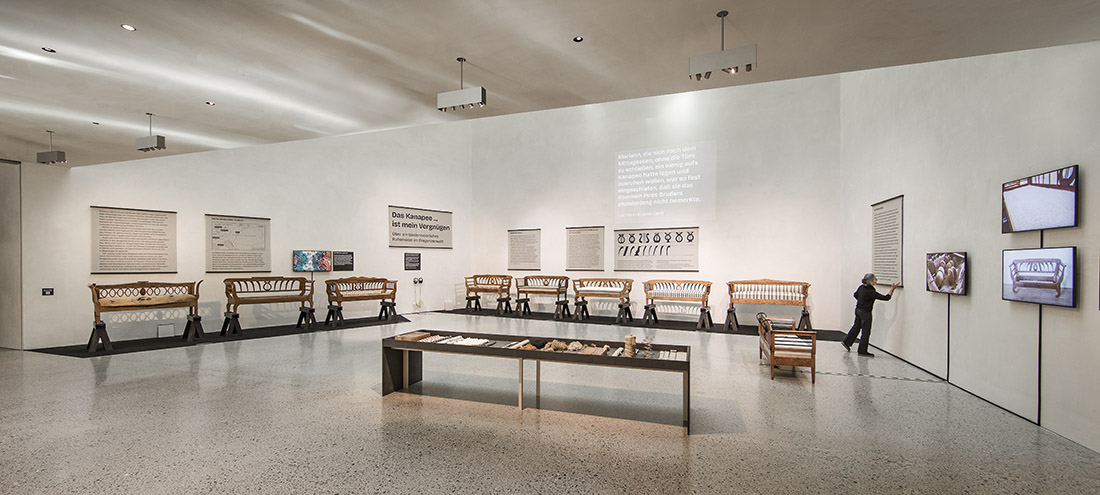
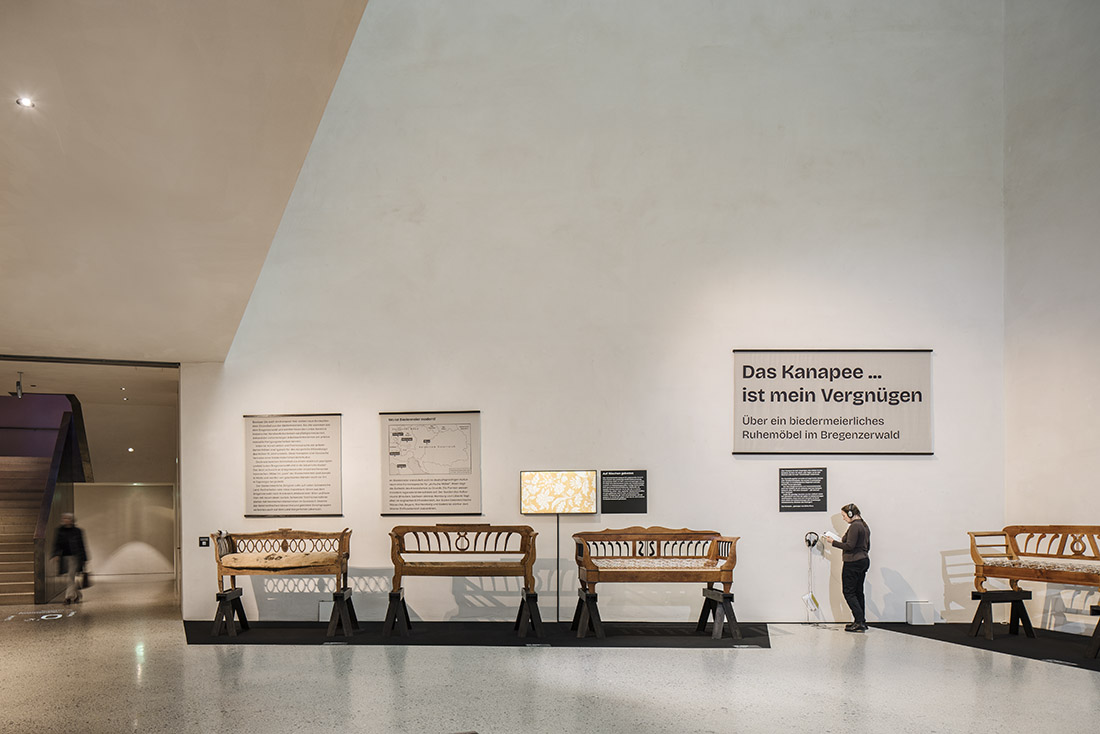
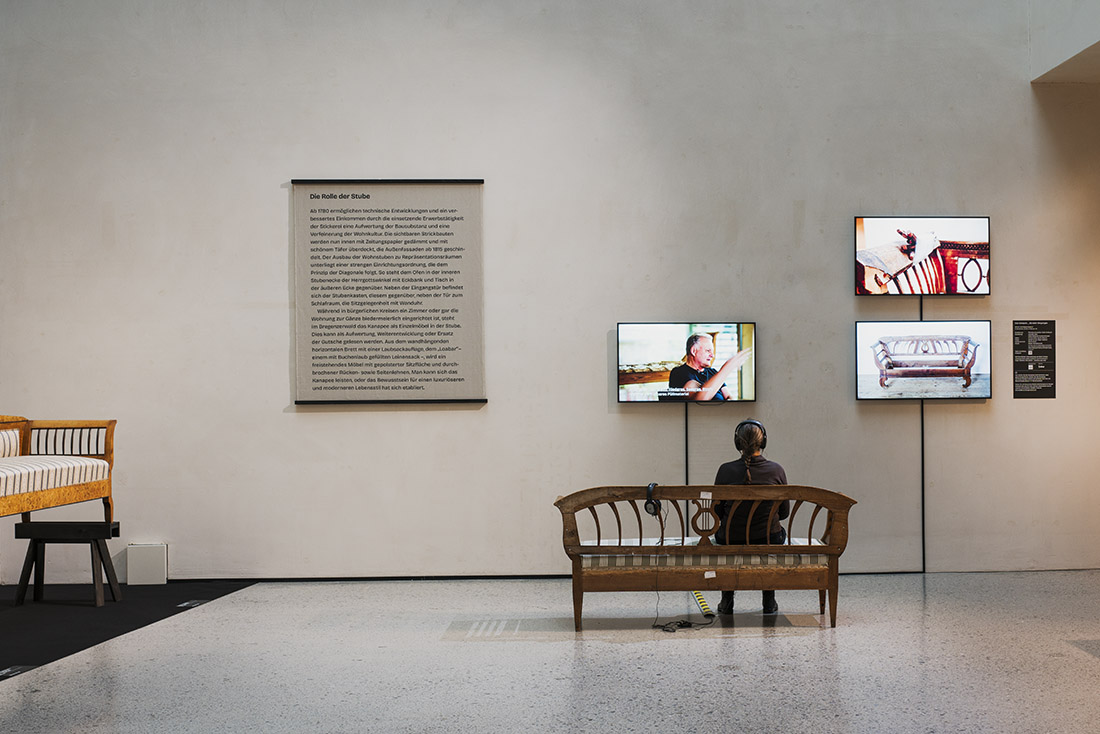
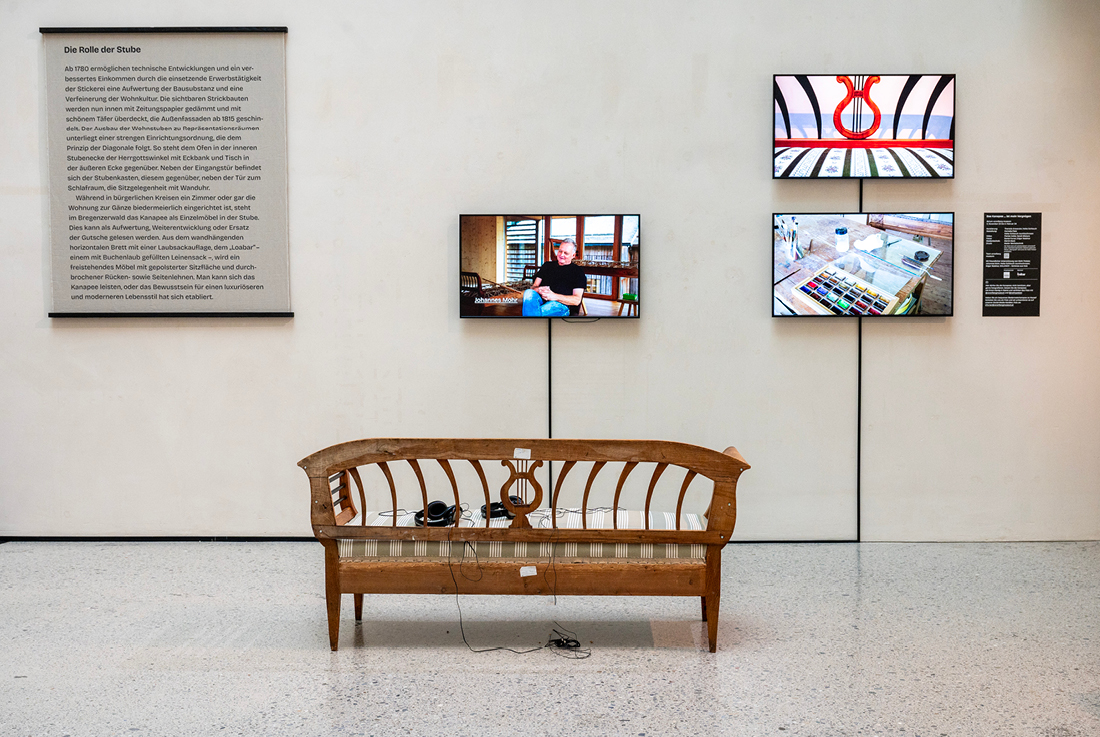
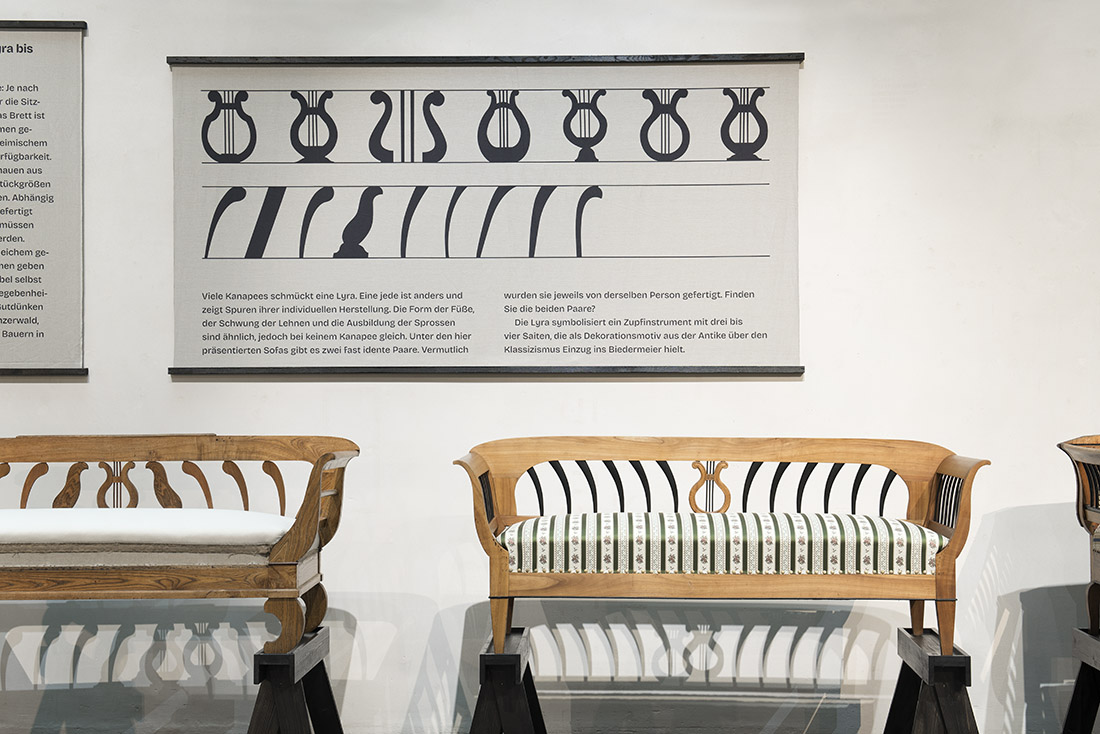
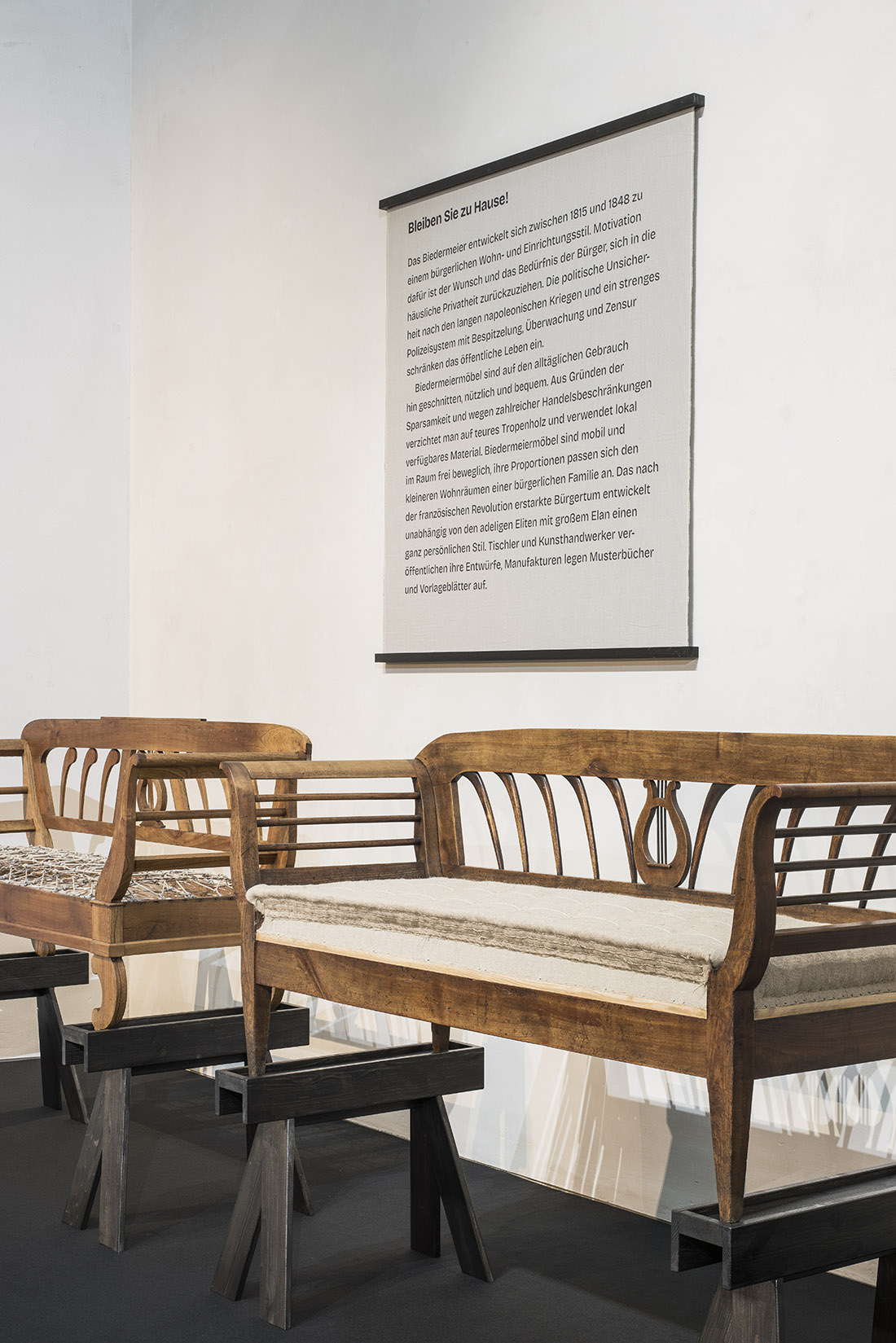
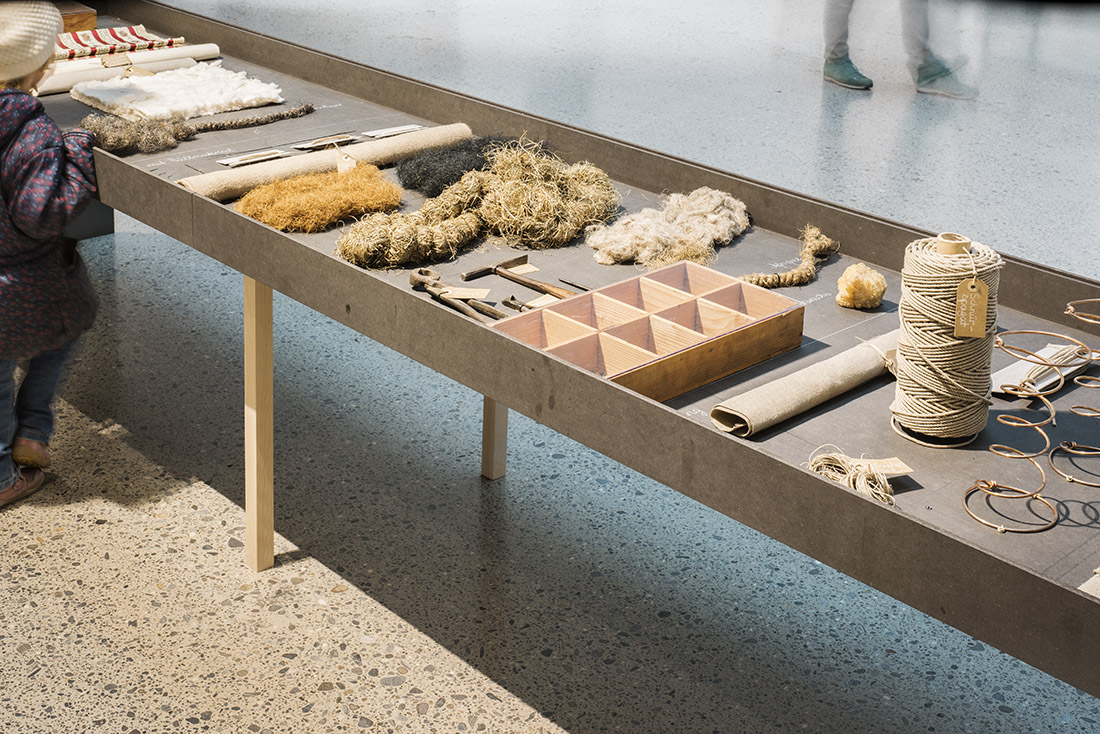
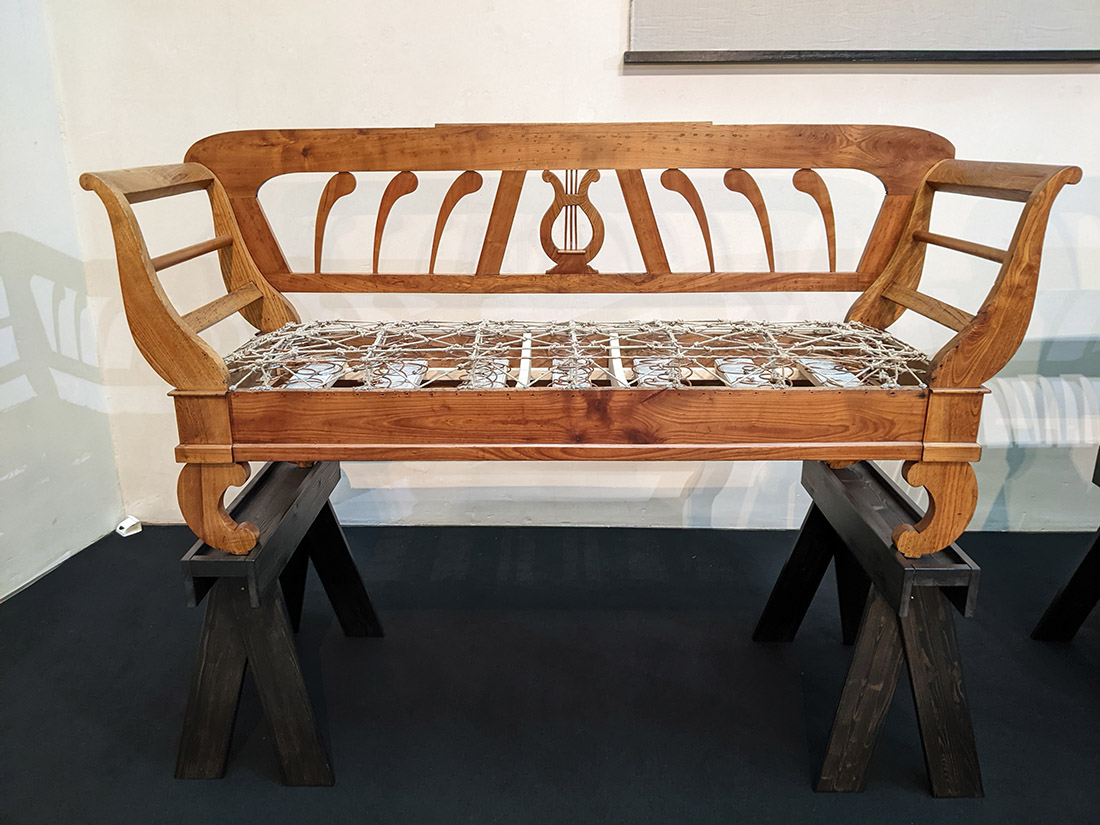
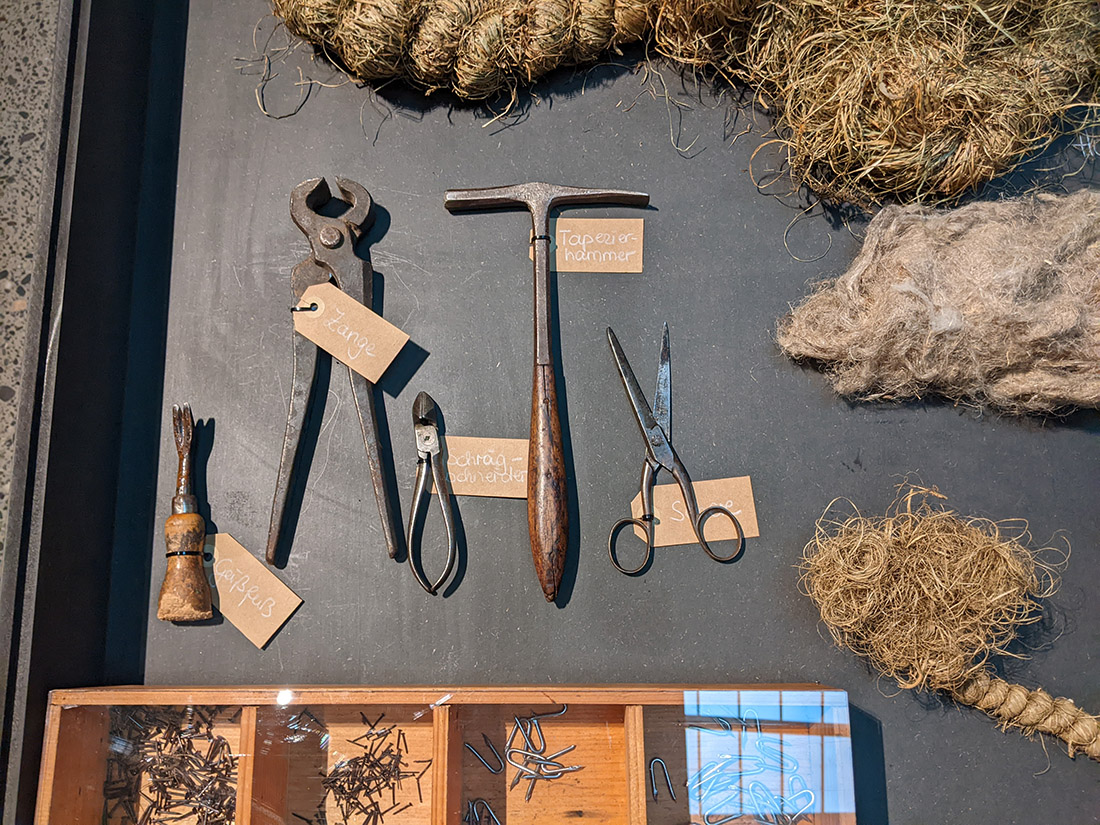

Credits
Interior
Heike Schlauch raumhochrosen
Client
Vorarlberg Museum
Year of completion
2023
Location
Bregenz, Austria
Total area
50 m2
Photos
Albrecht Imanuel Schnabel
Project Partners
Exhibition Design Cornelia Flatz and Heike Schlauch, Curators: Dr. Theresia Anwander (Vorarlberg Museum) and Heike Schlauch
Upholstery: Mohr Polster; Johannes Mohr
Carpentry/restauration: Waldner – Schönes aus Holz; Edgar Waldner


